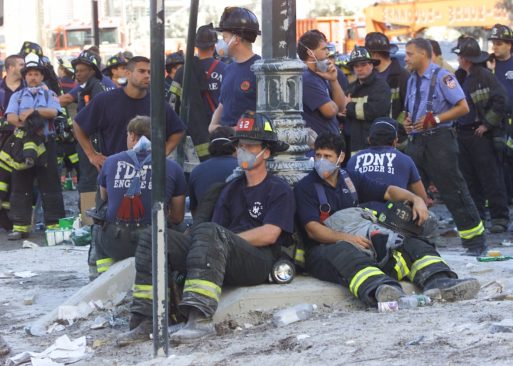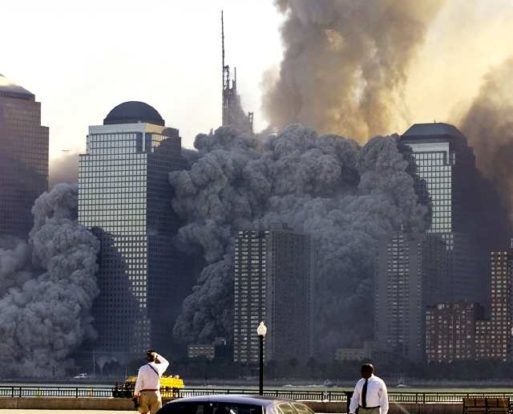In the aftermath of the September 11th terrorist attacks in New York, thousands of first responders combed through the rubble, looking for bodies and artifacts from those who had died. For months afterward, construction crews joined them, clearing the dust and debris that covered lower Manhattan like a shroud.
Soon afterwards, families returned to their homes, and workers returned to their desks, assured by authorities that the air was safe.

NYC firemen rest in the debris during 9/11 rescue effort
(Credit: wpri.com)
Now, 15 years later, thousands of men and women — first responders, construction workers and survivors alike — have been diagnosed with cancers linked directly to the toxic cloud that enveloped the city in the weeks following the attack.
Among the most recent victims is Sal Turturici, an EMT with the New York Fire Department who worked at Ground Zero for months following the attack. Sal was diagnosed with stomach cancer last October, although his wife says the doctors believe it he has had the disease for at least seven years. Sal had no symptoms, she said, until he began to have stomach pain late last year. Now, after several surgeries, doctors say there’s little more they can do.
Sal is one of about 5,000 responders and survivors who have developed 9/11-related cancers thus far, says Dr. Michael Crane, who heads the the 9/11 Health Program Clinic at Mount Sinai Hospital in New York. And there’s no end in sight, Crane said in an interview with Jim Axelrod of CBS News. “Here at Sinai, we see 10 to 15 new cancer patients in our population every week,” he added. “‘I’ve been in medicine for 40 odd years. It’s remarkable.”

The dust that enveloped Manhattan contained known carcinogens, including asbestos and dioxin
(Credit: 9-11 review.com)
In all, over 25 conditions and 50 types of cancer have been linked to the environmental effects of the 9/11 attacks, but researchers have yet to determine exactly which pollutants were to blame. According to a National Resources Defense Council report, the collapse of the Twin Towers represented an “unprecedented environmental assault,” that released hundreds of tons of carcinogens, including fiberglass, asbestos, benzene and dioxin, into the air. No one knows to what extent those toxins lingered in the dust that covered the city during the ensuing weeks. Nonetheless, their devastating health effects have become increasingly clear.
Today, over 40,000 New Yorkers are being monitored and treated for 9/11 related health disorders in clinics funded by the World Trade Center Health Program, a five-year, $1.5 billion effort instituted by the U.S. Centers for Disease Control and Prevention in 2012. Late last year, after months of debate, Congress approved another $8 billion to help those whose health has deteriorated in the years since the attack.

 9/11 First Responders Develop Cancer at an Alarming Rate
9/11 First Responders Develop Cancer at an Alarming Rate


 How Dare You Die Now!
How Dare You Die Now!

 “Help Me, Helen”
“Help Me, Helen”














